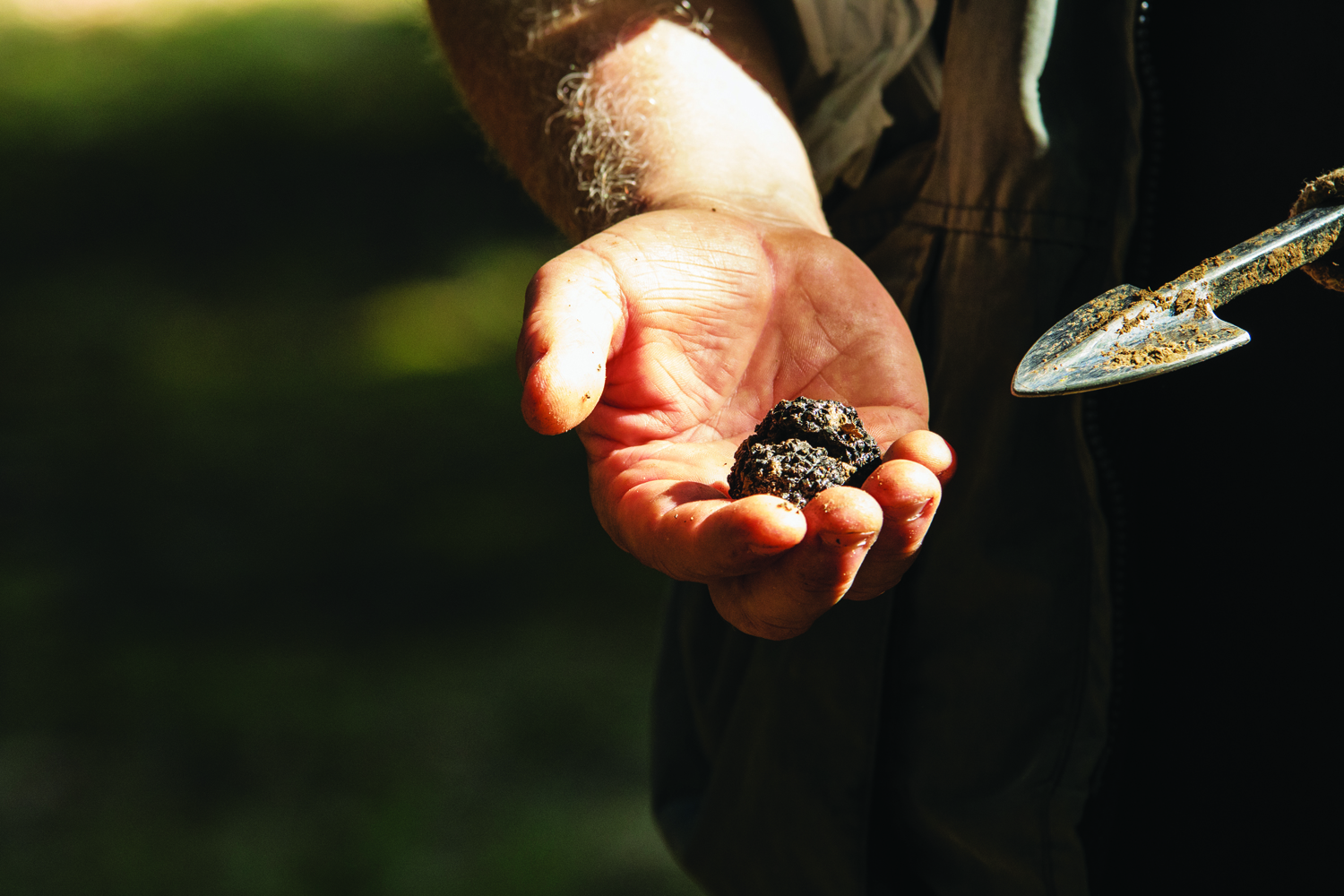The Temptation of Truffles
Wherever you are on Vancouver Island, chances are there’s buried treasure nearby. We’re talking diamonds—that is, the diamonds of the kitchen, better known as truffles, one of the most romantic, mysterious and expensive of foodstuffs.
A small but dedicated community of chefs, growers, foragers and scientists is convinced British Columbia can produce truffles to compare with the best from France and Italy. Now as many as 30 truffle orchards are in some phase of completion, including a reported 10 on Vancouver Island.
“There’s the romance, and then there’s the incredible hard work,” says Dr. Shannon Berch, a Government of British Columbia research scientist and founding member of the Truffle Association of British Columbia. “There’s always people showing interest. But once they learn what it’s going to take, it’s a very small percentage that say, ‘Yes, this is what I want to do.’ ”
"Everywhere that trees are"
Truffles are prized for their tantalizing aroma, and gourmands are willing to pay top dollar for that earthy, sensual, musky fragrance, last year shelling out an average of US$7,500 a kilogram for the precious white truffle from Italy.
“Is a truffle really worth that much money? Maybe not,” says chef Bill Jones of Deerholme Farm in the Cowichan Valley. “But it totally changed my mind when I tried the local ones.”
Truffles bring to mind visions of truffle dogs snuffling through autumn leaves and chefs tucking slivers of truffles under the skin of a plump chicken, but the reality is much earthier.
A truffle is the fruiting body of a fungus—technically, a tuber—that grows underground, amid the roots of certain trees, where it plays an important role in nutrient cycling. “Truffles are everywhere that trees are,” says forager Brooke Page.
Countless types of truffles grow wild all over the world, including the Périgord truffle (Tuber melanosporum), known as the “black diamond,” and the white Italian truffle (Tuber magnatum), which is the world’s most expensive.
Since the early 19th century, truffles have also been cultivated (with mixed success) by inoculating the roots of oak and hazelnut trees with truffle spores—just like the ones at Below the Nut Farm near Nanaimo. There, owners Chris Petres and Sheri Colwell have a shady orchard for Burgundy truffles, which ripen from late September to November, and a sunny one for Périgords, which fruit from late December to mid-February.
“We found our first truffle in 2013, six years after we planted our trees,” Petres recalls. “It was in August and a squirrel actually found it. It was sitting on top of the soil at the bottom of the tree. It looked like a lump of manure.”
It was a Burgundy truffle, the first kind grown in North America, and the only one Petres found that year. Then in January, he dug up 10 Périgords—only one of which was not rotten. “The Périgord aren’t quite suitable for the climate,” he says. “It’s unheard of to grow a Périgord truffle north of the 49th, even the 48th. The Périgord truffle is good, but not super productive. And a lot of times, they just freeze in the ground.”
Snuffling truffles out
Then there are the native truffles that Berch has documented on Vancouver Island. They grow mainly on the Island’s east coast, from Victoria to Quadra Island, beneath Douglas fir trees.
Many of them have been found by Page, one of a tiny handful of foragers who help Berch with her research, along with her companion, B.C.’s first trained truffle dog, Dexter the puggle. Over the past decade, the duo has discovered around 25 species previously undocumented in B.C. “There’s so few things you can be a pioneer in anymore, and truffles are one of those things,” she says.
“We’re going to need more and more of these people,” Berch says. “You need a really good reliable truffle dog and there aren’t a lot of truffle dogs in B.C.” Although a handful of B.C. breeders sell the expensive truffle dog known as Lagotto Romagnolo, Berch says, “You don’t need an Italian truffle dog to hunt truffles. Any dog can find a truffle.”
So can a pig, like the Vietnamese pot-bellied pigs Annabelle and Stevie, whom Petres and Colwell adopted and trained themselves. (“They are quite spoiled,” Petres admits.)
Once Annabelle and Stevie find the truffles, Petres sells them through his website—$1 to $1.50 per gram for the Burgundies, and $2 to $3 a gram for the Périgords—digging the truffles up right before shipping them overnight.
“We’re providing an expensive product and we want customers to be happy,” Petres says. “Having something like this that is local—the chefs love having something like this that they can trust.”
“They are better than the ones I get from France,” Jones says. “It’s the aroma that makes truffles so valuable, and the aroma is what the local ones excel at because they are very fresh—freshness is key.”
Page, on the other hand, won’t sell to chefs, though she will barter with them. “It gets really gross, really quickly,” she says. “I’ve become really good friends with all these people in Italy, mostly older men with truffle dogs, and they have to worry about their dogs being poisoned or stolen. I never want to see Canada go that way.”
She also advises chefs that the milder flavour of foraged truffles does best when infused into oil or butter. “It’s not like a European variety that stands up to any kind of cooking.”
Education, it seems, is the next hurdle for B.C.’s tiny truffle industry. That and time, and money, and all the other variables that leave these culinary diamonds rotting in the ground.






